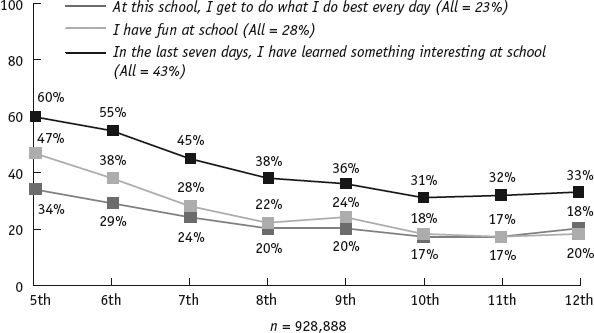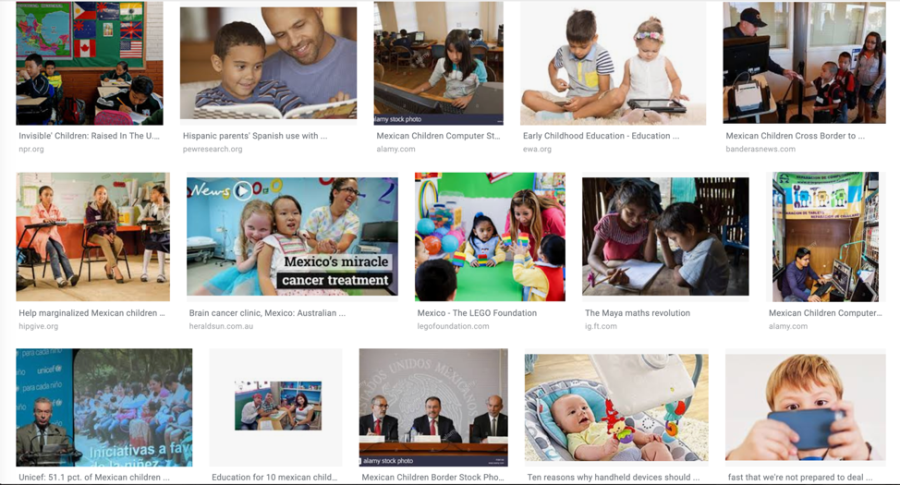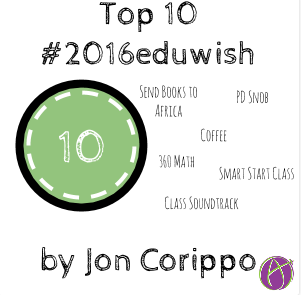 ACSA’s Superintendent Symposium recently brought together leaders from the forefront of California’s schools. The symposium provided the platform for sharing the vision, learning, and successful practices that are moving the State’s public schools forward. While California’s public schools rank 41st in the nation for per-pupil funding, the State’s superintendents contributed successful practices that are bringing creative and visionary leadership to the challenge of being underresourced. The goal – to provide rigorous academic instruction highlighted by preparing students for rapidly changing workforce skill sets while instilling a strong foundation in local, national, global, and digital citizenship. The methodology – putting structures and systems into place in cultures of support and caring for students and the adults who serve them.
ACSA’s Superintendent Symposium recently brought together leaders from the forefront of California’s schools. The symposium provided the platform for sharing the vision, learning, and successful practices that are moving the State’s public schools forward. While California’s public schools rank 41st in the nation for per-pupil funding, the State’s superintendents contributed successful practices that are bringing creative and visionary leadership to the challenge of being underresourced. The goal – to provide rigorous academic instruction highlighted by preparing students for rapidly changing workforce skill sets while instilling a strong foundation in local, national, global, and digital citizenship. The methodology – putting structures and systems into place in cultures of support and caring for students and the adults who serve them.
Achieving this goal comes, first and foremost, with an investment in people. An investment in the professional learning of the people who work with students every day. An investment in the teachers who design lessons. An investment in the support staff who keep things moving behind the scenes. An investment in all those who are supporting the learning and the social/emotional development of the children who attend our schools. Students come to school each day with a variety of needs. Some students show up from strong, supportive homes ready to be challenged. Some students show up for the only two meals of the day they will eat and a safe place to spend their spend time. Others show up needing social/emotional support, extra help to work through the challenges of a disability, or trying to learn English while also keeping up with grade level curriculum. Our schools are filled with caring staffs rising to the challenge of serving every child.
Calfornia’s school superintendents gathered to share successes and strategies on how to lead and support this very important work. These leaders were inspired as they focused on what it takes to prepare today’s student for their future within the structures that are being defined by rapid change and a need for adaptability. Keynotes by Thomas C. Murray of the Alliance for Excellent Education and Future Ready Schools, as well as Travis Allen of the iSchool Initiative, were energizing. The messages and resources provided forced deep thinking about how we are engaging our students in classrooms right now while simultaneously being tasked to prepare them for the world they will live in as adults.
I left inspired!
 Upon coming home from this week of professional learning, I, like the rest of the attendees, needed to catch up with mail, bills, email, laundry, grocery shopping… One of my first stops, as I embarked on catching up on the home and work fronts, was at Albertson’s. As I shopped for the upcoming week’s groceries, I noticed how engaged a three-year-old was with his grandparents as they too did their grocery shopping. I began gently “stalking” and eavesdropping on them.
Upon coming home from this week of professional learning, I, like the rest of the attendees, needed to catch up with mail, bills, email, laundry, grocery shopping… One of my first stops, as I embarked on catching up on the home and work fronts, was at Albertson’s. As I shopped for the upcoming week’s groceries, I noticed how engaged a three-year-old was with his grandparents as they too did their grocery shopping. I began gently “stalking” and eavesdropping on them.
I first met them in the meat department, where the full of life and personality three-year-old showed that he has great taste in the type steak he would like to eat – top sirloin. His grandparents were far more partial to the hamburger, but he had outstanding self-advocacy skills and, ultimately, the top sirloin made its way into the grocery cart.
As his grandparents hesitated to buy the steak, he took it upon himself to look around for and connect to other resources to help himself get what he wanted. He received support from unsuspecting customers in the meat department who responded to his requests for assistance. The first customer he reached out to, grabbed a plastic bag for him. He took the package of steak he wanted and the next customer he approached helped him to get the steak in the bag. All this, while his grandmother’s hand rested on his shoulder as she perused the hamburger options with her husband. I became cognizant that in this brief moment, the child had shown me that the at the age of three, he is already able to identify his preferences, speak articulately, advocate for himself, and collaborate with those around him to assist with problem-solving. These are expectations that are addressed specifically in the standards and strategies taught in our schools. Yet, there continues to be discussion and pushback in some circles on giving students voice and flexibility in their learning.
 The final stop of the shopping trip was at the Redbox. As I was selecting a movie, this toddler stood at the machine to my left while his grandparents watched him from the check-out line. As his grandmother paid for the groceries, he tapped through the prompts to get to the video game he wanted.
The final stop of the shopping trip was at the Redbox. As I was selecting a movie, this toddler stood at the machine to my left while his grandparents watched him from the check-out line. As his grandmother paid for the groceries, he tapped through the prompts to get to the video game he wanted.
I watched and listened as his grandfather approached and asked him what he was doing. The young boy, confidently responded that he was renting a video game. His grandfather responded that they couldn’t rent the video game. “Why not?” asked our clearly well-developed consumer. Grandad replied, “Because the machine isn’t working.” Without skipping a beat, the gentleman‘s grandson responded, “Yes grandpa, the machine does work. Here, let me teach you how. Can I have your credit card? All you have to do now is swipe your credit card and confirm your email. It will give you the game. The machine is working.”
I thought,”What an incredible spirit of generosity ready to teach, not to mention, great use of the word ‘confirm’.” I saw the beginning understandings of financial literacy. I saw the medium that is most engaging to this young man. I saw that he wanted to share this knowledge and was excited about his ability to do so. I saw self-advocacy skills.
I also saw that despite being told no twice, his spirit continued to remain positive, his ability to problem solve on his own continued to remain strong, his confidence to speak up continued to remain intact,
I kept this in mind as I thought of the research and data that Tom had presented from the “Engaged Today: Ready for Tomorrow,” Gallup Student Poll, 2015 during his keynote. It is disheartening to see how students respond by grade level to the prompt of whether they are having fun learning while at school.

The graph clearly shows the rate at which the level of enthusiasm for learning at school declines.
Travis Allen, college student, and entrepreneur shares a story about the skills he learned through video games that serve as the foundation for his successful business. I appreciated his encouragement that as adults we should sit down and play these games with children so that we can see the skills they are learning from gaming. Games such as SimCity, Diner Dash, Roller Coaster Tycoon, and the Angry Birds series are only a sampling of games that develop skills such as urban planning, creativity in problem-solving, managing a budget, paying attention to details, pulling information and details out of situations.
This wonderful three-year-old boy, grocery shopping at Albertson’s with his grandparents, made sure that the learning and the thinking that happened at ACSA’s Superintendent’s Symposium solidified an understanding of what our call to leadership is. We must support our public schools with adequate resources and the freedom to explore how to engage students. This boy will come to us with some understanding of financial literacy. He will come to us as a child who is curious, creative and a problem solver. He will come to us with strong verbal communication skills, already applying critical thinking to come up with solutions for real world day to day challenges and problems.
It is up to us, as educators, to put structures in place that allow for the freedom and flexibility needed to change a system in which data points demonstrate a decline in student engagement the longer they attend school. It is up to us to continue to engage this little boy with the learning tools he has already started developing during his toddler years. It is up to us to provide him with an education not just from the point of view of adults, but also from the point of view and expectations of him as a learner. It is up to us to capitalize on the skills he is already bringing with him
He will be in one of our classrooms in a year and a half. Will we be ready?
 “Here in Singapore, we don’t compete. We help each other,” commented a Singaporean principal as we shared a table over lunch at the World EduLead Conference. She was with two other colleagues from their cluster who were preparing to excuse themselves for a promotion ceremony from assistant principals to principals. Still, they took some time to visit, talking about how they get together every month, “…to learn together, have lunch and conversation.” They shared knowing looks and laughed as they spoke of having support conversations with each other . As educators, we know the importance of the cathartic conversations with colleagues, about the moments that bring us joy, make us laugh, or that we just can’t believe.
“Here in Singapore, we don’t compete. We help each other,” commented a Singaporean principal as we shared a table over lunch at the World EduLead Conference. She was with two other colleagues from their cluster who were preparing to excuse themselves for a promotion ceremony from assistant principals to principals. Still, they took some time to visit, talking about how they get together every month, “…to learn together, have lunch and conversation.” They shared knowing looks and laughed as they spoke of having support conversations with each other . As educators, we know the importance of the cathartic conversations with colleagues, about the moments that bring us joy, make us laugh, or that we just can’t believe.






















 Does what you’re doing feed your soul?
Does what you’re doing feed your soul?




 ACSA’s Superintendent Symposium recently brought together leaders from the forefront of California’s schools. The symposium provided the platform for sharing the vision, learning, and successful practices that are moving the State’s public schools forward. While California’s public schools rank 41st in the nation for per-pupil funding, the State’s superintendents contributed successful practices that are bringing creative and visionary leadership to the challenge of being underresourced. The goal – to provide rigorous academic instruction highlighted by preparing students for rapidly changing workforce skill sets while instilling a strong foundation in local, national, global, and digital citizenship. The methodology – putting structures and systems into place in cultures of support and caring for students and the adults who serve them.
ACSA’s Superintendent Symposium recently brought together leaders from the forefront of California’s schools. The symposium provided the platform for sharing the vision, learning, and successful practices that are moving the State’s public schools forward. While California’s public schools rank 41st in the nation for per-pupil funding, the State’s superintendents contributed successful practices that are bringing creative and visionary leadership to the challenge of being underresourced. The goal – to provide rigorous academic instruction highlighted by preparing students for rapidly changing workforce skill sets while instilling a strong foundation in local, national, global, and digital citizenship. The methodology – putting structures and systems into place in cultures of support and caring for students and the adults who serve them. Upon coming home from this week of professional learning, I, like the rest of the attendees, needed to catch up with mail, bills, email, laundry, grocery shopping… One of my first stops, as I embarked on catching up on the home and work fronts, was at Albertson’s. As I shopped for the upcoming week’s groceries, I noticed how engaged a three-year-old was with his grandparents as they too did their grocery shopping. I began gently “stalking” and eavesdropping on them.
Upon coming home from this week of professional learning, I, like the rest of the attendees, needed to catch up with mail, bills, email, laundry, grocery shopping… One of my first stops, as I embarked on catching up on the home and work fronts, was at Albertson’s. As I shopped for the upcoming week’s groceries, I noticed how engaged a three-year-old was with his grandparents as they too did their grocery shopping. I began gently “stalking” and eavesdropping on them. The final stop of the shopping trip was at the Redbox. As I was selecting a movie, this toddler stood at the machine to my left while his grandparents watched him from the check-out line. As his grandmother paid for the groceries, he tapped through the prompts to get to the video game he wanted.
The final stop of the shopping trip was at the Redbox. As I was selecting a movie, this toddler stood at the machine to my left while his grandparents watched him from the check-out line. As his grandmother paid for the groceries, he tapped through the prompts to get to the video game he wanted.
 It’s 2018 and we’re still having conversations about what it means to be a 21st Century Leader and Learner in education. We are still having conversations about what a 21st Century education should like. Nearly one-fifth of the way into the 21st Century, it’s time to shift these conversations and focus on the actions needed to ensure that we are providing a relevant education to today’s student that will prepare them for their tomorrow.
It’s 2018 and we’re still having conversations about what it means to be a 21st Century Leader and Learner in education. We are still having conversations about what a 21st Century education should like. Nearly one-fifth of the way into the 21st Century, it’s time to shift these conversations and focus on the actions needed to ensure that we are providing a relevant education to today’s student that will prepare them for their tomorrow. Making the commitment to being an educator is making a commitment to the future. It is making a commitment to empowering each generation with knowledge and skills. The responsibility for educating children and students of all ages has always been an important one. Yet, our generation has been given the gift of living in a time marked by rapid shifts technological growth and in how the world does business.
Making the commitment to being an educator is making a commitment to the future. It is making a commitment to empowering each generation with knowledge and skills. The responsibility for educating children and students of all ages has always been an important one. Yet, our generation has been given the gift of living in a time marked by rapid shifts technological growth and in how the world does business. 


